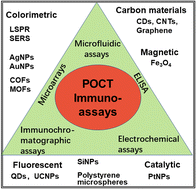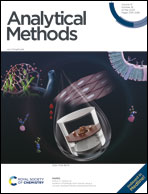The application of nanoparticles in point-of-care testing (POCT) immunoassays
Abstract
The Covid-19 pandemic has led to greater recognition of the importance of the fast and timely detection of pathogens. Recent advances in point-of-care testing (POCT) technology have shown promising results for rapid diagnosis. Immunoassays are among the most extensive POCT assays, in which specific labels are used to indicate and amplify the immune signal. Nanoparticles (NPs) are above the rest because of their versatile properties. Much work has been devoted to NPs to find more efficient immunoassays. Herein, we comprehensively describe NP-based immunoassays with a focus on particle species and their specific applications. This review describes immunoassays along with key concepts surrounding their preparation and bioconjugation to show their defining role in immunosensors. The specific mechanisms, microfluidic immunoassays, electrochemical immunoassays (ELCAs), immunochromatographic assays (ICAs), enzyme-linked immunosorbent assays (ELISA), and microarrays are covered herein. For each mechanism, a working explanation of the appropriate background theory and formalism is articulated before examining the biosensing and related point-of-care (POC) utility. Given their maturity, some specific applications using different nanomaterials are discussed in more detail. Finally, we outline future challenges and perspectives to give a brief guideline for the development of appropriate platforms.

- This article is part of the themed collection: Analytical Methods Review Articles 2023


 Please wait while we load your content...
Please wait while we load your content...